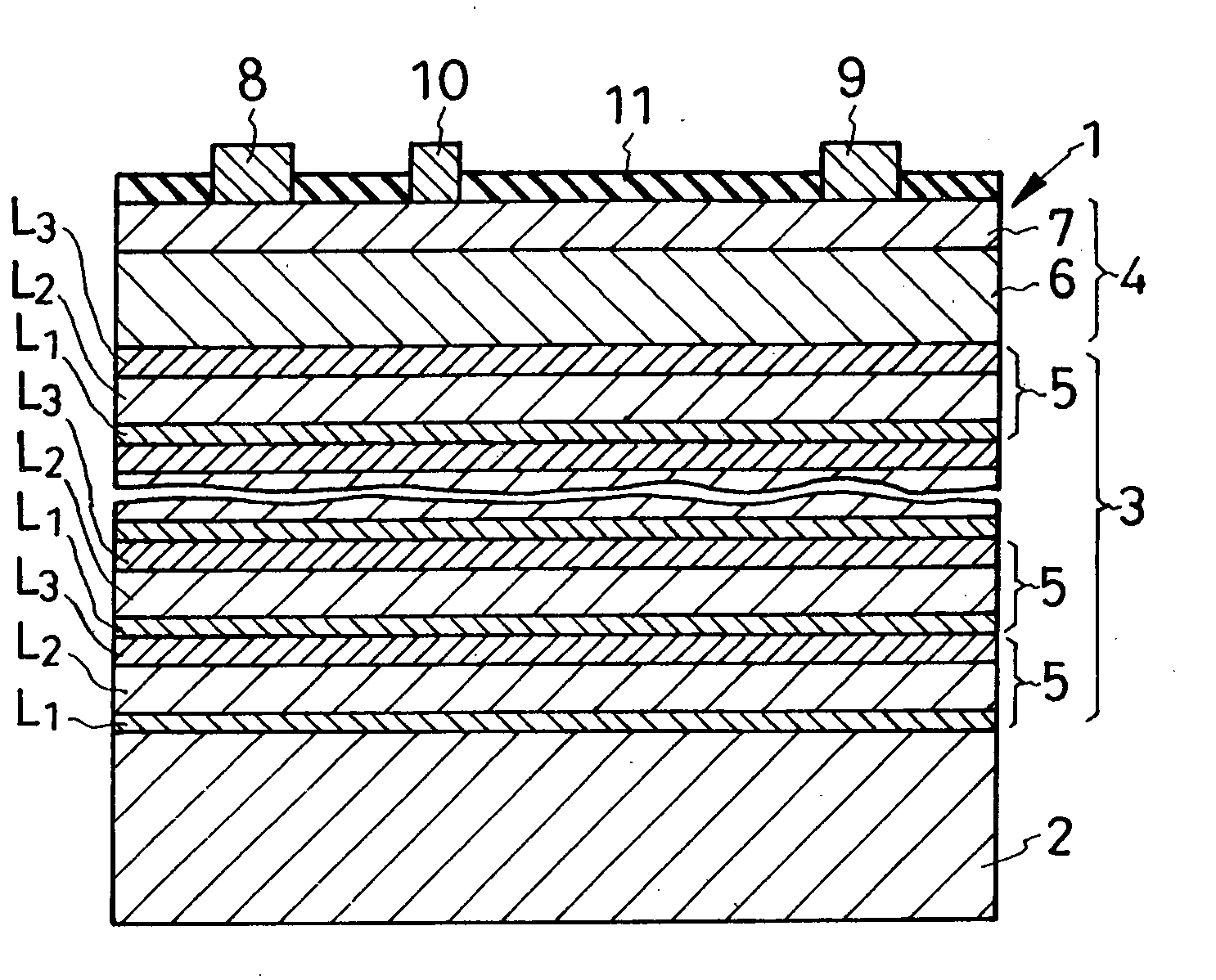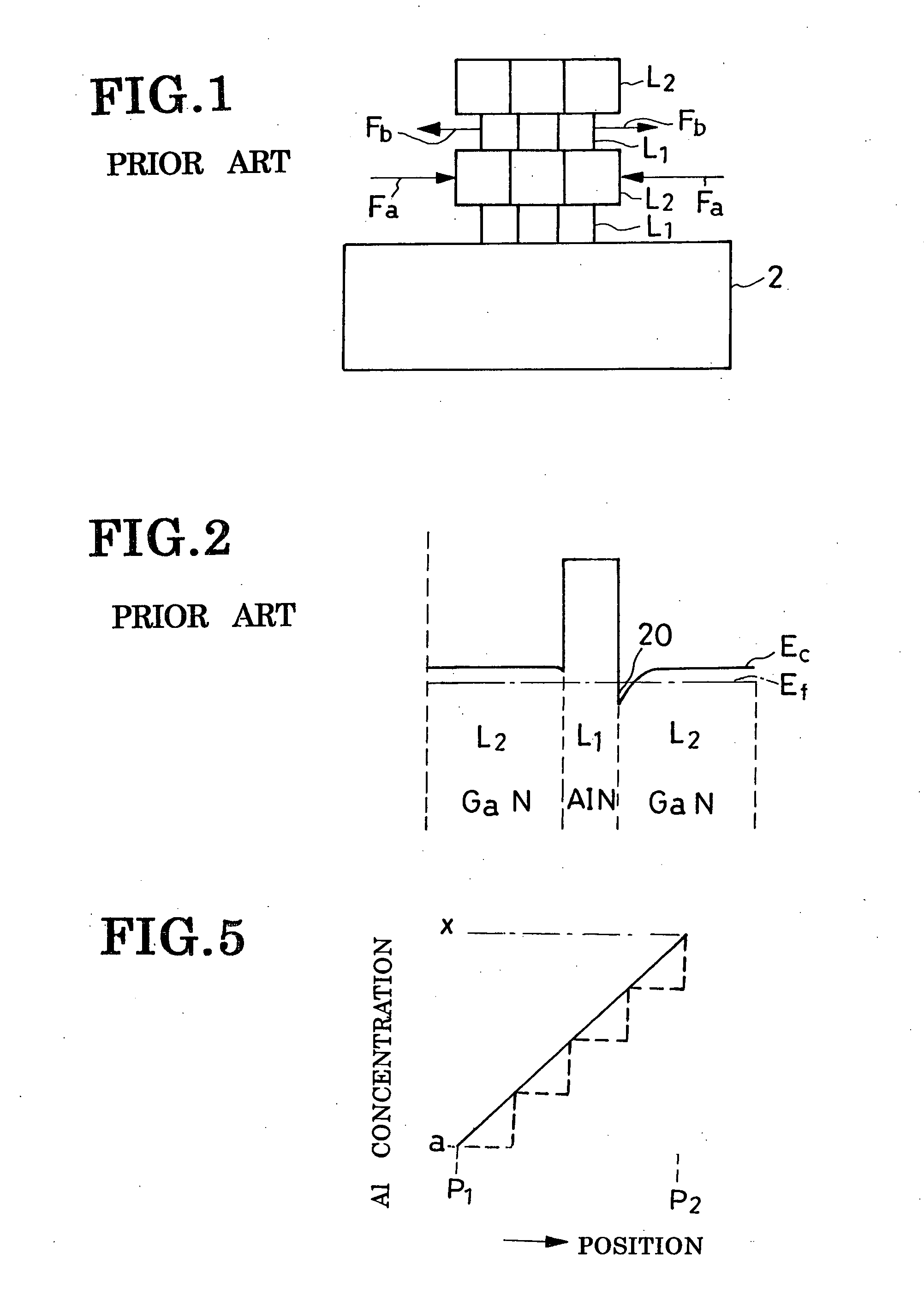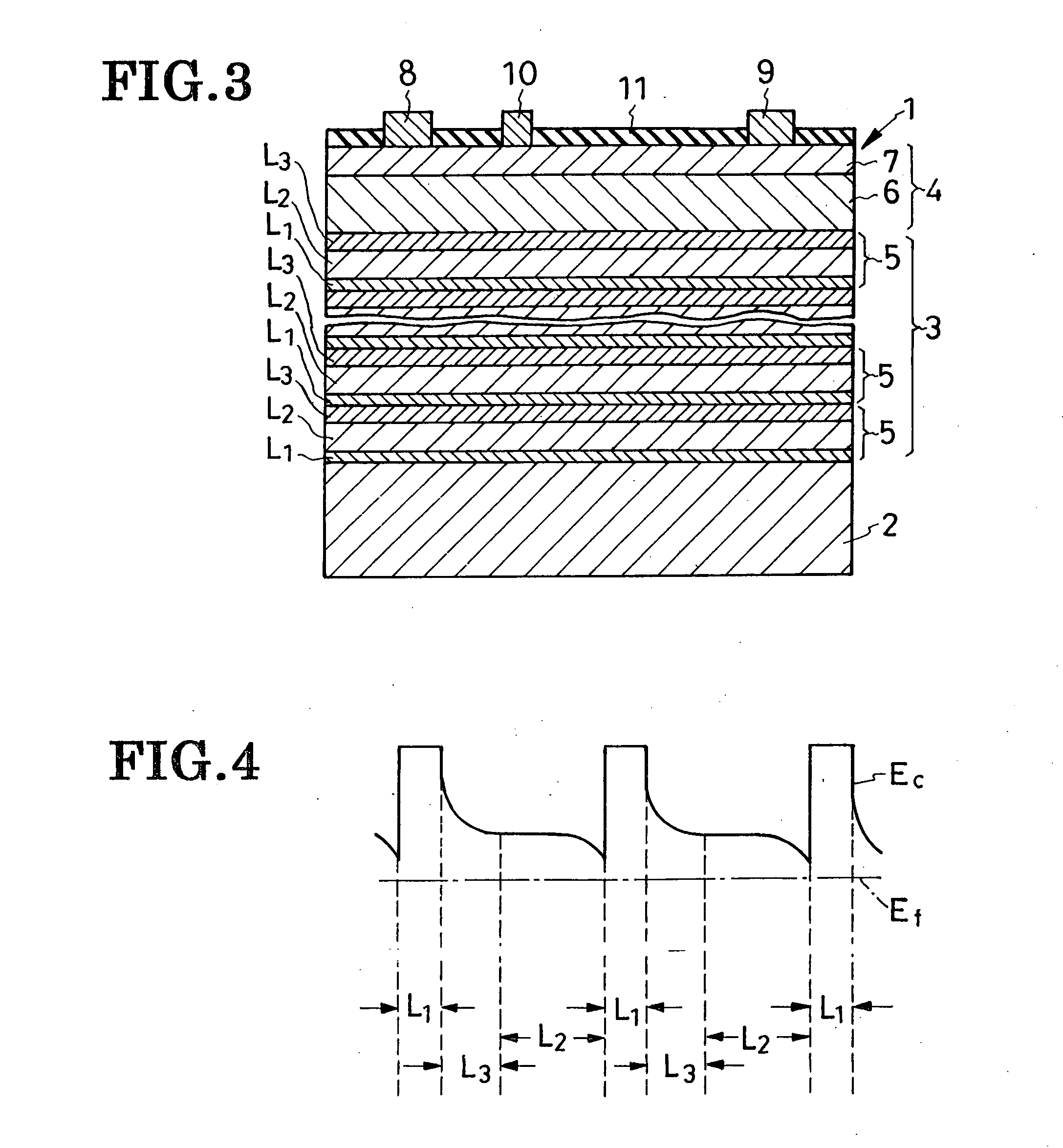Nitride semiconductor substrate, method of fabrication thereof, and semiconductor element built thereon
a technology of nitride semiconductor and semiconductor layer, which is applied in the direction of basic electric elements, electrical equipment, semiconductor devices, etc., can solve the problems of inconvenient linear expansion coefficient, inability to completely satisfy silicon as a substrate material, and easy stress of nitride semiconductor layer or layer, so as to reduce the amount of leakage current flowing and low resistance
- Summary
- Abstract
- Description
- Claims
- Application Information
AI Technical Summary
Benefits of technology
Problems solved by technology
Method used
Image
Examples
embodiment
of FIG. 8
[0080] In FIG. 8 is shown still another substrate system 1b which is akin to the FIG. 3 substrate system 1 except for a main semiconductor region 4a. Unlike the main semiconductor region 4 for HEMTs in the FIG. 3 substrate system 1, the main semiconductor region 4a of this FIG. 8 embodiment takes the form of a single nitride semiconductor region 6a suitable for fabrication of MESFETs. Preferably, the nitride semiconductor region 6a is of GaN doped with silicon as an n-type impurity. This region 6a is grown epitaxially on the buffer region 3 using the MOCVD apparatus. MESFETs are completed as the three electrodes 8-10 of each such element are formed on the n-type nitride semiconductor region 6a via openings in the insulating film11. The source 8 and drain 9 make ohmic contact with the semiconductor region 6a whereas the gate 10 makes Schottky-barrier contact therewith.
[0081] The MESFETs thus formed on the improved substrate system 1b gain the same advantages as do the HEMTs...
PUM
 Login to View More
Login to View More Abstract
Description
Claims
Application Information
 Login to View More
Login to View More - R&D
- Intellectual Property
- Life Sciences
- Materials
- Tech Scout
- Unparalleled Data Quality
- Higher Quality Content
- 60% Fewer Hallucinations
Browse by: Latest US Patents, China's latest patents, Technical Efficacy Thesaurus, Application Domain, Technology Topic, Popular Technical Reports.
© 2025 PatSnap. All rights reserved.Legal|Privacy policy|Modern Slavery Act Transparency Statement|Sitemap|About US| Contact US: help@patsnap.com



